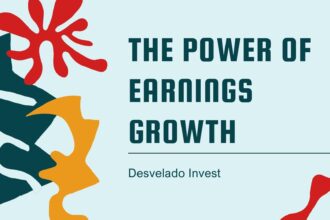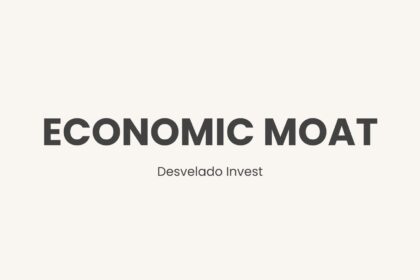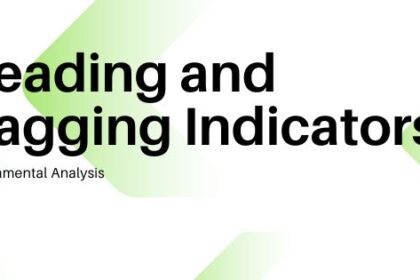Written By: Nishant Parsad
Imagine you are investing in a company today. You buy its stock at ₹1,000, expecting it to rise over time. But what will actually drive its value higher in the future? The answer is simple – earnings growth.
In the stock market, there are two primary drivers of a company’s valuation:
1. Earnings Growth – How much the company’s profits increase over time.
2. Valuation Multiple (P/E Ratio) – How much investors are willing to pay for each rupee of earnings.
While market sentiment and macroeconomic factors can impact a stock’s price-to-earnings (P/E) ratio, the one factor investors have a better chance of predicting is earnings growth.
In this article, we will explore why earnings growth is the cornerstone of successful investing, how it affects stock returns, and how investors can use this knowledge to make better investment decisions.

What Determines a Stock’s Return?
Unlike fixed-income investments, where returns are predetermined, stock returns depend on the future performance of a company. The value of a stock depends on:
– The increase or decrease in earnings/profits of the company.
– The change in its valuation multiple (P/E ratio).
Example: How Earnings Growth Affects a Company’s Value
Let’s say a company X reports a profit of ₹100 crore in FY24 and has a market capitalization of ₹4,000 crore, meaning it trades at a P/E ratio of 40x.
If in FY27, the company’s profits double to ₹200 crore, its market value will depend on the prevailing P/E multiple:
| FY27 P/E | FY27 Profits | Market Value |
| 30x | ₹200 Cr | ₹6,000 Cr |
| 40x | ₹200 Cr | ₹8,000 Cr |
| 50x | ₹200 Cr | ₹10,000 Cr |
If earnings shrink to ₹75 crore and the P/E falls to 30x, the company’s value will drop to ₹2,250 crore, leading to losses for investors.
Thus, a stock’s future value is directly linked to earnings growth and changes in its P/E multiple.

Earnings Growth vs. P/E Multiple: Where Should Investors Focus?
Since both earnings and P/E affect stock returns, where should investors focus?
| Factors Affecting Earnings Growth | Factors Affecting P/E Multiple |
| Industry demand & competition | Global market sentiment |
| Business strategy & execution | Macro factors (GDP, interest rates, inflation) |
| Market share growth | Liquidity & market cycles |
Earnings growth is more predictable than P/E multiples, which are driven by market emotions and macro trends. A company with a strong competitive advantage, efficient management, and a growing industry is more likely to achieve consistent earnings growth, making it a more reliable indicator of stock returns.
How Strong Earnings Growth Protects Investors from Losses
The stock market is unpredictable, and investors often misjudge valuation multiples. However, investing in companies with strong earnings growth can act as a natural hedge against P/E multiple contraction.
Example: Earnings Growth Can Offset Valuation Declines
If a stock’s earnings double over 4 years (100% growth), but the P/E ratio declines by 10%, the investor still earns 80% returns.
Similarly, if a company grows at 30% per year but sees a 20% correction due to valuation concerns, the stock’s P/E ratio becomes cheaper, making it an attractive buy again.
For companies with slow earnings growth, P/E corrections can lead to long periods of underperformance, whereas high-growth companies recover faster.

What Drives Strong Earnings Growth?
Not every company can sustain high earnings growth. Investors need to evaluate:
1. Predictability of Earnings Growth
Can the company maintain growth even in economic downturns? Businesses with strong brand loyalty, stable demand, and recurring revenue models tend to weather market cycles better.
Example: Hindustan Unilever continues growing even during recessions due to its essential FMCG products.
2. Longevity of Growth
Is the company’s growth sustainable, or will it slow down after a few years? Businesses benefiting from megatrends (e.g., electric vehicles, renewable energy) can sustain growth longer.
Example: Adani Green Energy benefits from the long-term transition to clean energy.
3. Key Growth Drivers
Investors should look at:
✔ Market share gains – Does the company dominate its sector?
✔ Capital allocation – Does management reinvest in profitable areas?
✔ Cash flow conversion – Are earnings translating into actual cash?
Example: Tata Power has seen earnings growth due to its investment in solar and EV infrastructure.
How Investors Can Reduce Risk and Maximize Returns
The best way to minimize investment risk is to buy high-growth companies at reasonable valuations.
However, investing in the fastest-growing companies isn’t always ideal, as they often trade at high P/E multiples. Investors should:
– Look for companies growing earnings at 15-30% annually.
– Buy at valuations near long-term industry averages.
– Avoid overpaying for future growth.
If purchased at fair valuations, stock returns closely match earnings growth, reducing the risk of P/E corrections.

When Should You Sell a High-Growth Stock?
Just because a stock doubles in value doesn’t mean you should sell. Some companies continue compounding wealth for years due to multiple tailwinds.
🔹 Sell if earnings growth slows down significantly.
🔹 Reevaluate if valuations become extremely stretched.
🔹 Hold as long as the business fundamentals remain strong.
Example: Asian Paints and HDFC Bank have delivered multi-decade compounding returns because they sustained high earnings growth over time.
Conclusion: Why Earnings Growth is the Ultimate Investing Edge
Investing is about making smart, long-term bets on businesses that grow. Instead of speculating on market moods and P/E ratios, investors should focus on companies with strong, sustainable earnings growth.
By prioritizing earnings growth, investors can:
– Avoid unnecessary risks from valuation fluctuations.
– Identify companies with the highest long-term wealth creation potential.
– Make more informed investment decisions based on fundamentals.
While markets fluctuate, earnings growth remains the most reliable driver of stock returns. Mastering this concept is the key to building wealth through the stock market.
Final Thought:
“In the short run, the market is a voting machine, but in the long run, it is a weighing machine.” – Benjamin Graham
Focus on earnings, and let compounding do the heavy lifting!







